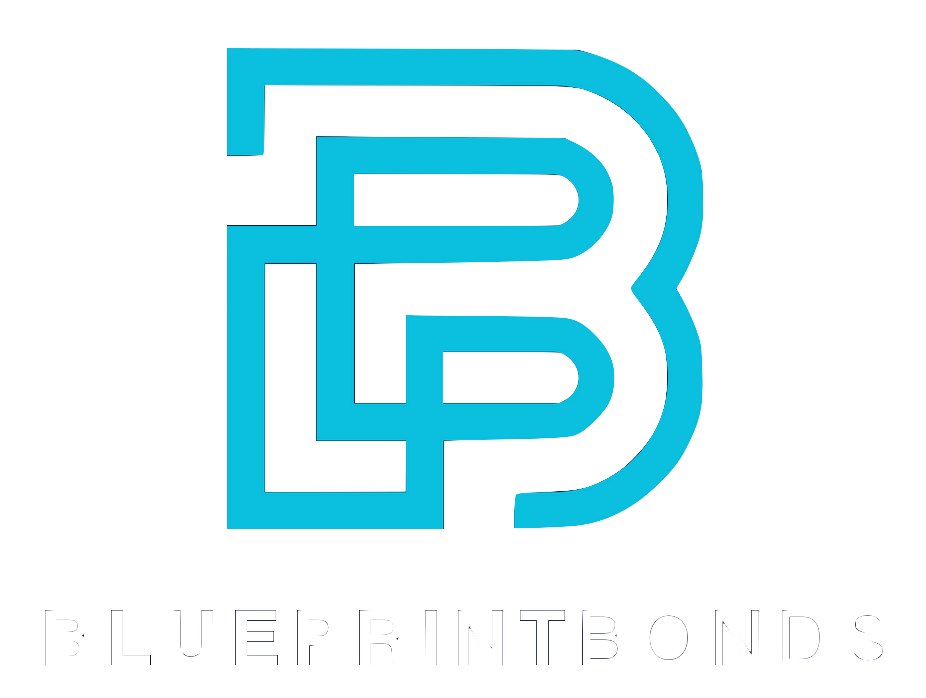In the complex world of construction and infrastructure projects, surety bonds serve as a critical financial safeguard. These bonds guarantee project completion and protect stakeholders from contractor defaults, making them indispensable in both public and private sectors. Yet, an intriguing question arises: how do interest rates influence surety bond approvals? Understanding this relationship is vital for contractors, project owners, and investors alike, especially as the global surety market continues to evolve.
Recent trends highlight a growing surety market, valued at $16 billion in 2021 and projected to reach $24.4 billion by 2031, driven by infrastructure investments and risk management needs. This growth coincides with fluctuating interest rates, which impact borrowing costs and financial stability. This article explores the surprising correlation between surety bond approvals and interest rates, shedding light on how economic factors shape the surety landscape.
For a comprehensive overview of the surety market’s economic impact, the Allied Market Research provides valuable insights into market valuation and growth projections.
Understanding Surety Bonds and Their Role in Construction
Surety bonds act as a three-party agreement between the project owner (obligee), the contractor (principal), and the surety company. They ensure that the contractor fulfills contractual obligations, providing a financial guarantee that protects the project owner against losses due to contractor default. This mechanism is especially crucial in large-scale infrastructure projects where financial stakes are high.
The importance of surety bonds extends beyond mere financial security. According to Lee Covington, President and CEO of the Surety & Fidelity Association of America, unbonded projects are significantly riskier, with default rates potentially ten times higher than bonded projects. This stark difference underscores why many state and federal laws mandate surety bonds for public construction projects, reinforcing sound public policy.
Moreover, a study by Ernst & Young in collaboration with the Surety & Fidelity Association of America found that bonded projects not only have lower default rates but also experience faster completion times and reduced costs in the event of contractor default. This efficiency is critical in maintaining project timelines and budgets, especially in the current climate of rising material and labor costs.
In addition to safeguarding financial interests, surety bonds also serve as a quality assurance mechanism. The surety company conducts thorough due diligence before issuing a bond, evaluating the contractor's financial stability, experience, and past performance. This vetting process helps ensure that only qualified contractors are entrusted with significant projects, thereby enhancing the overall quality of construction work. Furthermore, the presence of a surety bond can improve a contractor's credibility and reputation in the industry, making it easier for them to secure future projects.
Furthermore, the landscape of construction financing is evolving, with surety bonds increasingly being recognized as a vital tool for risk management. As the construction industry faces challenges such as labor shortages and fluctuating material costs, the assurance provided by surety bonds becomes even more critical. They not only protect project owners but also foster a more stable environment for contractors, enabling them to focus on delivering quality work without the looming fear of financial ruin. This symbiotic relationship between contractors, project owners, and surety companies ultimately contributes to the successful completion of projects across various sectors, from residential developments to large-scale public works.
How Interest Rates Influence Surety Bond Approvals
Interest rates, set by central banks and influenced by economic conditions, directly affect borrowing costs for contractors. When interest rates rise, the cost of financing projects increases, potentially straining contractors’ cash flow and creditworthiness. This, in turn, impacts surety companies’ risk assessments when approving bonds.
Surety underwriters evaluate a contractor’s financial health, project experience, and credit risk before issuing bonds. Higher interest rates can lead to increased debt servicing costs for contractors, raising the likelihood of financial distress. Consequently, surety companies might tighten approval criteria or increase premiums to mitigate heightened risks.
Conversely, lower interest rates reduce borrowing costs, improving contractors’ financial stability and making bond approvals more accessible. This dynamic creates a cyclical relationship where interest rate fluctuations influence surety bond market activity, affecting project feasibility and execution.
Market Growth Amid Interest Rate Changes
Despite the challenges posed by interest rate volatility, the surety market has demonstrated resilience and growth. The global surety market’s valuation is expected to reach $24.4 billion by 2031, fueled by robust infrastructure spending and credit risk management strategies. Notably, the U.S. government's Infrastructure Investment and Jobs Act allocates $1.2 trillion towards transportation and infrastructure, significantly boosting demand for surety bonds in upcoming projects.
This influx of public funding underscores the importance of surety bonds in managing risk and ensuring project completion. As interest rates fluctuate, the market adapts, balancing risk with opportunity to support essential infrastructure development. Contractors are increasingly leveraging technology and data analytics to present a more compelling case for bond approval, showcasing their project management capabilities and financial health. This proactive approach not only enhances their chances of securing surety bonds but also fosters a more competitive environment among contractors, driving innovation and efficiency in project execution.
Moreover, the growing trend of sustainable construction practices is influencing the surety bond landscape. As more projects incorporate green building standards and sustainable materials, surety companies are beginning to recognize the long-term benefits of supporting environmentally conscious initiatives. This shift not only aligns with global sustainability goals but also attracts a new wave of investors who prioritize responsible financing. For further details on how infrastructure investments are shaping surety demand, the
General Indemnity Group offers an insightful analysis of key market trends.
Risk Management and Economic Value of Surety Bonds
Surety bonds serve as a critical risk management tool, protecting project owners and taxpayers from financial losses due to contractor failure. The economic value of surety bonding extends beyond individual projects, contributing to overall market stability and confidence. By ensuring that contractors fulfill their obligations, surety bonds play a vital role in maintaining the integrity of the construction industry, which is particularly important in times of economic fluctuation. The assurance provided by these bonds not only safeguards investments but also promotes a culture of accountability among contractors, encouraging them to adhere to high standards of performance.
Lee Covington emphasizes that the risks associated with unbonded construction projects—such as delays and cost overruns—highlight the necessity of surety bonds as a form of sound public policy. By mitigating these risks, surety bonds foster a more reliable construction environment, which is essential for public infrastructure initiatives. Furthermore, the presence of surety bonds can enhance the competitive landscape, as contractors who are bonded often gain a reputational advantage, making them more appealing to project owners who prioritize reliability and financial security. This dynamic not only elevates the quality of work but also drives innovation, as contractors strive to differentiate themselves in a crowded marketplace.
In addition, a report by the Travelers Institute highlights that bonded projects generally incur lower costs of completion if a default occurs, compared to non-bonded projects. This cost efficiency benefits all stakeholders, reducing the financial burden on public funds and private investors alike. Moreover, the assurance of financial backing provided by surety bonds can lead to more favorable financing terms for contractors, enabling them to secure better rates and terms from lenders. This ripple effect can stimulate economic growth by allowing contractors to take on larger projects that might otherwise be out of reach, further enhancing the overall capacity and resilience of the construction sector.
Surety Revenues Reflect Market Confidence
The growth in surety revenues further reflects the market’s confidence in the value of bonding. Revenues increased by 7.7% to $7.43 billion in 2021, up from $6.9 billion in 2020, signaling strong demand despite economic uncertainties. This upward trend indicates that contractors and project owners recognize the importance of surety bonds in securing project success and managing credit risk. As the construction industry continues to evolve, the role of surety bonds becomes increasingly vital in addressing emerging challenges, such as supply chain disruptions and labor shortages, which can threaten project timelines and budgets.
For a detailed look at surety market revenues and their implications, WTW’s report offers comprehensive insights into recent financial trends. Additionally, the report delves into the evolving landscape of surety bonding, exploring how technology and data analytics are reshaping underwriting processes and risk assessment. As the industry adapts to these advancements, stakeholders can expect to see enhanced efficiencies and more tailored bonding solutions that meet the specific needs of diverse projects, ultimately reinforcing the foundational role of surety bonds in fostering a stable and prosperous construction environment.
Future Outlook: Infrastructure, Public-Private Partnerships, and Market Expansion
The future of the surety market appears promising, driven by the urgent need to restore aging infrastructure and the growing adoption of public-private partnerships (PPPs). These factors are expected to accelerate market growth, with projections estimating a global market size of $31.85 billion by 2031 at a CAGR of 6.6%.
Public-private partnerships, in particular, introduce complex financial arrangements that increase the demand for surety bonds as risk mitigation tools. By ensuring contractor performance and financial responsibility, surety bonds facilitate smoother collaboration between public entities and private investors. This collaboration is essential in addressing critical infrastructure projects, such as highways, bridges, and public transportation systems, which require substantial capital investment and expertise.
This expansion reflects a broader trend toward leveraging surety bonds not only as financial guarantees but also as instruments that enhance project governance and accountability. As governments increasingly turn to PPPs to fund large-scale projects, the role of surety bonds becomes even more significant. They not only protect public interests but also instill confidence among private investors, encouraging them to participate in projects that might have otherwise been deemed too risky.
Moreover, the integration of technology into the surety market is poised to further transform the landscape. Innovations such as blockchain and artificial intelligence are being explored to streamline processes, improve risk assessment, and enhance transparency in transactions. These advancements could lead to more efficient underwriting practices and quicker turnaround times for bond issuance, making it easier for contractors to secure the necessary surety bonds for their projects.
For an in-depth forecast of the surety market’s growth and drivers, The Insight Partners’ report provides detailed projections and analysis.
Conclusion: Navigating the Interplay Between Surety Bonds and Interest Rates
The relationship between surety bond approvals and interest rates is complex and multifaceted. Rising interest rates increase financial pressures on contractors, potentially tightening bond approval conditions, while lower rates can ease access to surety bonds. Despite these fluctuations, the surety market continues to grow, driven by substantial infrastructure investments and the critical role bonds play in risk management.
For stakeholders in construction and infrastructure, understanding this correlation is essential for strategic planning and financial decision-making. Surety bonds remain a cornerstone of project security, ensuring that even in volatile economic environments, projects can proceed with confidence and accountability.
As the construction industry navigates evolving economic landscapes, the synergy between interest rates and surety bond approvals will remain a key factor influencing project success and market stability.




